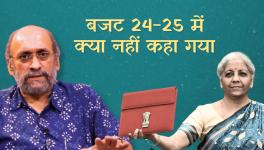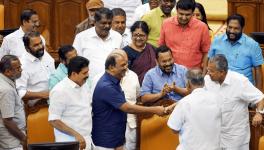Expectations vs Reality of Gender Budget 2021
Ahead of the presentation of the Budget on February 1 by Finance Minister Nirmala Sitharaman, the Bharatiya Janata Party-led government has made claims of a-V shaped “super” recovery of the Indian economy.
Meanwhile, 17 million Indian women have been left jobless – four out of every ten women in India lost their jobs due to the COVID-19 pandemic, according to an analysis of the latest Centre for Monitoring Indian Economy (CMIE)’s Consumer Pyramids Household Survey (CPHS) data.
The economic contribution of Indian women to the GDP stands at around 17%, despite their percentage in the total population being 48%. This is because most of the work performed by women as traditional caregiver are not considered as contributors to the economy.
According to a report in Business Standard, over the last 16 years, India's gender budget has increased from Rs 24,241 crore in 2005-06 to Rs 1,43,462 crore ($19 billion) in 2020-21, a six-fold increase in absolute terms.
In FY 2020-21, a total allocation of Rs 1,43,461.72 crore was made to the gender budget. There are two parts of this budget – Part A caters exclusively, i.e. 100% allocations under this are for women and girls while Part B includes atleast 30% allocations for schemes oriented towards women and girls. However, in the Gender Budget 2020-21, out of the total allocations, only Rs 28,568.32 crore were allocated under Part A, which is earmarked for women and girls, constituting only 20% of the budget– the second-lowest since 14% in 2015-16.
Not only that, the Business Standard data shows that, in the last 13 years, the allocations as a proportion to the total Budget have stayed constant between 4.3% and 5.9%. The allocation was less than 5% of the total budget in five of the last six years.
Further, the allocation for women-specific schemes has come down from 7.3% to 6.54% in 2020-21, indicating slower growth, that for composite schemes has risen from 11.1% to 13% in the same period.
Speaking to NewsClick, Kavita Krishanan, secretary of the All India Progressive Women's Association (AIPWA) said, “We are looking at an economy which is devastated by the lockdown. The focus needs to be on ASHAs (Accredited Social Health Activists), Anganwadi workers, women in employment, and the central government needs to show that in this budge. But what we have seen is only the government’s apathy and deviation of funds. We need the government to spend our money where their mouth is.”
Women’s rights activists also state that while the gender budget highlights and claims to boast the government claims of extensive funding, it leaves out key schemes that cater to women and instead focuses on generalised schemes.
For example, as mentioned in the BS report, the Department of Water and Sanitation did not report any part of the allocation of the Jal Jeevan Mission, a scheme that aims to provide household tap connections to all rural households. This, despite “the scheme guideline document stating that it will particularly improve quality of life for women”.
What is notable is that over the past few years, allocations made under schemes such as the rural jobs programme called the Mahatma Gandhi National Rural Employment Guarantee Scheme (MGNREGS), the rural housing scheme called the Pradhan Mantri Awas Yojana (PMAY) and the Anganwadi Services Scheme that is a part of the early childhood care and development programme, have made up half of the total gender budget allocations. The outlay for the Women and Child Development Department is Rs 901 crore. Of this, Rs 607 crore is for anganwadis.
Also, allocations under PMAY constituted 70% of Part A under the gender budget while other schemes benefiting women seem to have been sidelined.
Commenting on the budget, AR Sindhu, general secretary of the All India Federation of Anganwadi Workers and Helpers (AIFAWH), told NewsClick, “The allocation of crucial schemes has remained asymmetrical. These include Anganwadi and Integrated Child Development Services schemes even during the Rs 20,000 crore relief package announced amid the pandemic. Further, the COVID-19 lockdown has left women bearing the brunt of the health hazards and managing their households. We have been demanding a recognition of the unpaid gendered work, but the government is ignoring the pay for the basic, essential services, which will need to be accounted for.”
Also read: Budget 2021: Union Leaders Say No Hopes for Respite of Workers, More Privatisation to Follow
Get the latest reports & analysis with people's perspective on Protests, movements & deep analytical videos, discussions of the current affairs in your Telegram app. Subscribe to NewsClick's Telegram channel & get Real-Time updates on stories, as they get published on our website.
























